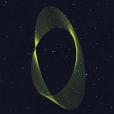《The Art of the Infinite》是Oxford University Press, USA出版的圖書,作者是Robert Kaplan,Ellen Kaplan。
基本介紹
- 作者:Robert Kaplan、Ellen Kaplan
- 出版社:Oxford University Press, USA
- 出版時間:2003年4月3日
- 定價:26.00 美元
- 裝幀:Hardcover
- ISBN:9780195147438
內容簡介
Robert Kaplan's The Nothing That Is: A Natural History of Zero was an international best-seller, translated into eight languages. The Times called it "elegant, discursive, and littered with quotes and allusions from Aquinas via Gershwin to Woolf" and The Philadelphia Inquirer praised it as "absolutely scintillating." In this delightful new book, Robert Kaplan, writing tog...(展開全部)Robert Kaplan's The Nothing That Is: A Natural History of Zero was an international best-seller, translated into eight languages. The Times called it "elegant, discursive, and littered with quotes and allusions from Aquinas via Gershwin to Woolf" and The Philadelphia Inquirer praised it as "absolutely scintillating." In this delightful new book, Robert Kaplan, writing together with his wife Ellen Kaplan, once again takes us on a witty, literate, and accessible tour of the world of mathematics. Where The Nothing That Is looked at math through the lens of zero, The Art of the Infinite takes infinity, in its countless guises, as a touchstone for understanding mathematical thinking. Tracing a path from Pythagoras, whose great Theorem led inexorably to a discovery that his followers tried in vain to keep secret (the existence of irrational numbers); through Descartes and Leibniz; to the brilliant, haunted Georg Cantor, who proved that infinity can come in different sizes, the Kaplans show how the attempt to grasp the ungraspable embodies the essence of mathematics. The Kaplans guide us through the "Republic of Numbers," where we meet both its upstanding citizens and more shadowy dwellers; and we travel across the plane of geometry into the unlikely realm where parallel lines meet. Along the way, deft character studies of great mathematicians (and equally colorful lesser ones) illustrate the opposed yet intertwined modes of mathematical thinking: the intutionist notion that we discover mathematical truth as it exists, and the formalist belie

